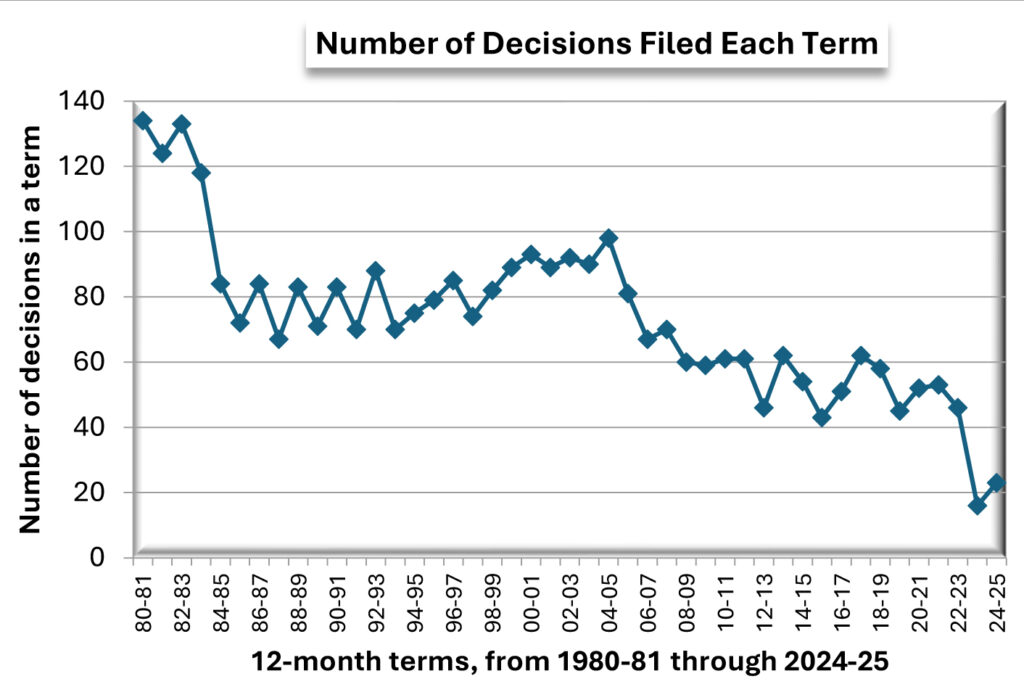The arrival of spring has prompted our annual estimate of the number of decisions that the supreme court will file by the end of its term this summer. Given the remarkable plunge in the court’s output last term—only 14 decisions, far below the total in any year over the past century—much curiosity accompanies predictions for 2024-25.
As of April 20, the justices have decided seven cases, with 16 more past oral argument and awaiting decisions.[1] Assuming that all 16 of these cases reach decisions by term’s end, that would yield a total of 23 cases resolved in 2024-25. It’s still possible that one or another of the 16 cases will be dismissed as improvidently granted or placed on hold (as happened twice in 2023-24), but nothing appears likely to require more than a slight adjustment in the estimate of 23 cases.[2]
Were it not for last year’s figure of 14 cases, a total of only 23 cases would be unprecedentedly low, as the graph makes clear. Compared to 14 cases, however, the estimate of 23 amounts to a 64% increase. Whether this represents the beginning of a return to the recent past’s annual average of roughly 50 cases, or the establishment of a new normal, we shall see in years to come.
[1] The 16 cases awaiting decision are: Wisconsin State Legislature v. Wisconsin Department of Public Instruction
Josh Kaul v. Wisconsin State Legislature
State v. Kordell L. Grady
Nicole McDaniel v. Wisconsin Department of Corrections
Wisconsin Department of Corrections, Division of Community Corrections v. Brian Hayes
State v. Jobert L. Molde
State v. Joan L. Stetzer
Scot Van Oudenhoven v. Wisconsin Department of Justice
Service Employees International Union Healthcare Wisconsin v. Wisconsin Employment Relations Commission
State v. Luis A. Ramirez
State v. Carl Lee McAdory
Tony Evers v. Howard Marklein
Wisconsin Manufacturers and Commerce, Inc. v. Wisconsin Department of Natural Resources
Melissa A. Hubbard v. Carol J. Neuman, MD
State v. H.C.
Josh Kaul v. Joel Urmanski
[2] Although cases dismissed as improvidently granted do not figure in the graph, it does include 3-3 per curiam decisions (which are normally not included in SCOWstats calculations). In 2023-24 there were two cases dismissed as improvidently granted and two 3-3 per curiam decisions. So far, we’ve had none of either type in 2024-25.

Speak Your Mind